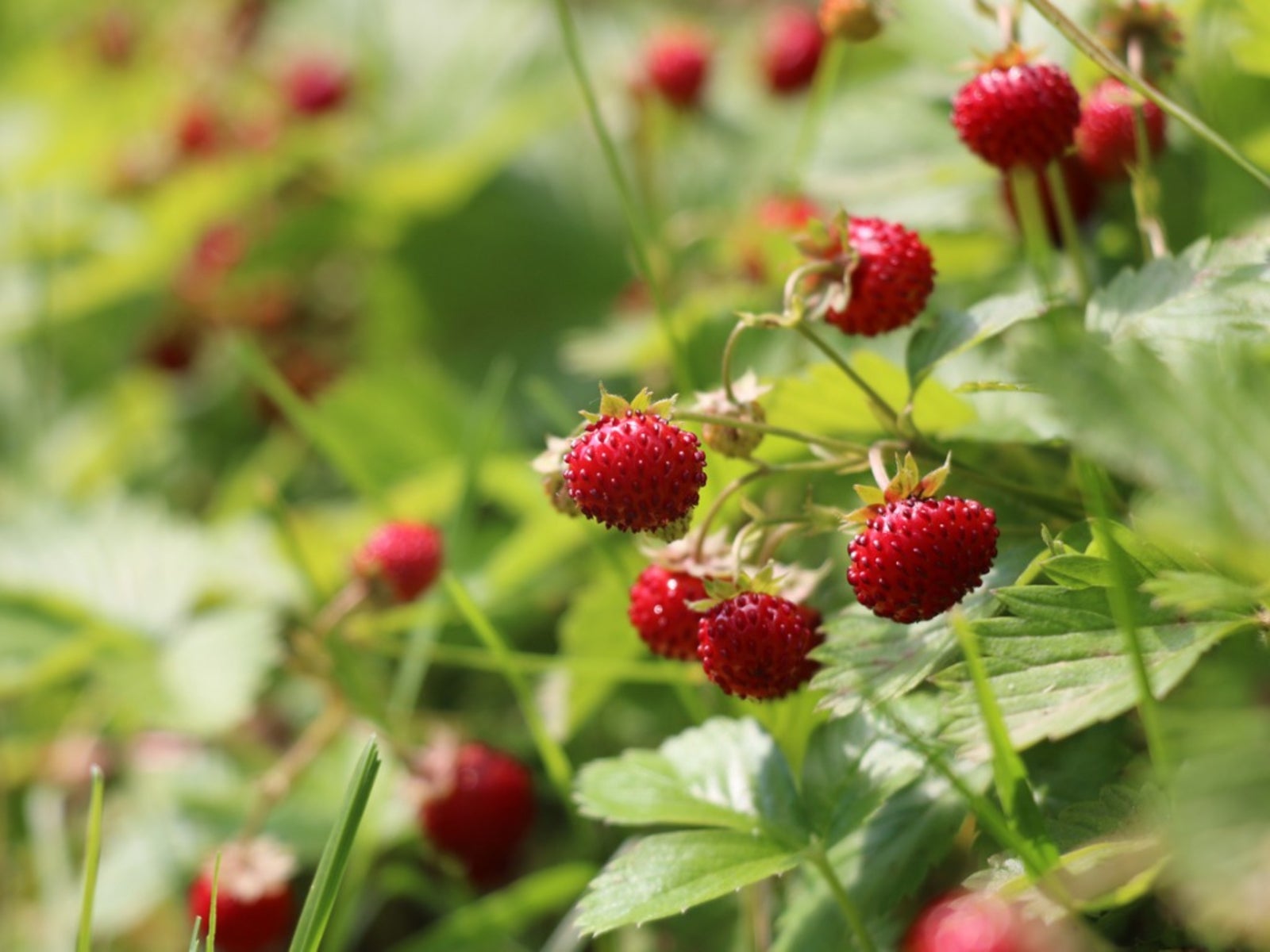What Are Alpine Strawberries: Tips For Growing Alpine Strawberries

The strawberries we are familiar with today are nothing like those eaten by our ancestors. They ate Fragaria vesca, commonly referred to as alpine or woodland strawberry. What are alpine strawberries? Native to Europe and Asia, varieties of alpine strawberries can still be found growing in North America, both naturally and as an introduced species. The following article discusses how to grow alpine strawberry and other pertinent woodland strawberry information.
What are Alpine Strawberries?
Although similar to modern strawberries, alpine strawberry plants are smaller, lack runners, and have significantly smaller fruit, about the size of a fingernail. A member of the rose family, Rosaceae, the alpine strawberry is a botanical form of the wood strawberry, or "fraise de bois" in French. These tiny plants can be found growing wild along the perimeter of woods in Europe, North and South America, and northern Asia and Africa. This alpine form of the wood strawberry was first discovered around 300 years ago in the low Alps. Unlike wood strawberries that only bear fruit in the spring, alpine strawberries continuously bear through the growing season, June to October.
Additional Woodland Strawberry Information
The first runner-less alpine strawberries selected were called ‘Bush Alpine’ or ‘Gaillon.’ Today, there are many strains of alpine strawberries, some of which produce fruit that is yellow or cream in color. They can be grown in USDA zones 3 through 10. The plants have tri-foliate, slightly serrated, green leaves. Blooms are small, five petaled, and white with yellow centers. The fruit has a delicately sweet, wild strawberry flavor with many varieties said to have a hint of pineapple. The genus name comes from the Latin “fraga,” which means strawberry, and from “fragrans,” meaning fragrant, in reference to the aroma of the fruit.
How to Grow an Alpine Strawberry
These delicate looking plants are tougher than they look and can bear fruit with as little sun as four hours a day. Unfussy, they bear the best testing fruit in soil that is rich in organic matter and that is well-draining. Alpine strawberries have shallow roots that can be easily damaged through cultivation or by the hot summer sun, so it is best to mulch around them with compost, straw, or pine needles. Add fresh mulch in the spring to continually enrich the soil, retain moisture, discourage weeds, and keep the soil cool. Plants can be propagated from seed or via crown division. If growing alpine strawberries from seed, sow seed in a flat filled with a well-draining medium. Very lightly cover the seeds with soil and then set the flat in a pan of water. Seeds will take a few weeks to germinate and may not do so all at once, so be patient. After a month or so of growth, the seedlings should be transplanted into individual pots and slowly hardened off outside. Transplant them into the garden after all chance of frost has passed for your area. Seedlings planted in the spring will bear that summer. In successive growing years, the plants will begin to fruit in the spring. As the plants age, rejuvenate them by division. Dig the plants up in the early spring and cut off the young, tender growth on the outside of the plant. Make sure this cut clump has roots; it’s going to be a new plant after all. Replant the newly cut clump of berries and compost the old center plant.
Gardening tips, videos, info and more delivered right to your inbox!
Sign up for the Gardening Know How newsletter today and receive a free copy of our e-book "How to Grow Delicious Tomatoes".

Amy Grant has been gardening for 30 years and writing for 15. A professional chef and caterer, Amy's area of expertise is culinary gardening.
-
 Looking For Plants To Give You The Soft And Fuzzies? Try These 5 Fuzzy Leaf Plant Options
Looking For Plants To Give You The Soft And Fuzzies? Try These 5 Fuzzy Leaf Plant OptionsLovers of texture, drama, silver foliage and tactile plants will adore these special sensory garden additions. These fuzzy leaf plant options will leave you all aglow
By Susan Albert
-
 Get Ready For A Summer Of Hummers! Grow These Full Sun Hummingbird Plants and Flowers
Get Ready For A Summer Of Hummers! Grow These Full Sun Hummingbird Plants and FlowersIf you’re lucky enough to enjoy a sunny backyard, make sure you are maxing out on your pollinator opportunities and grow these full sun hummingbird plants and flowers
By Tonya Barnett